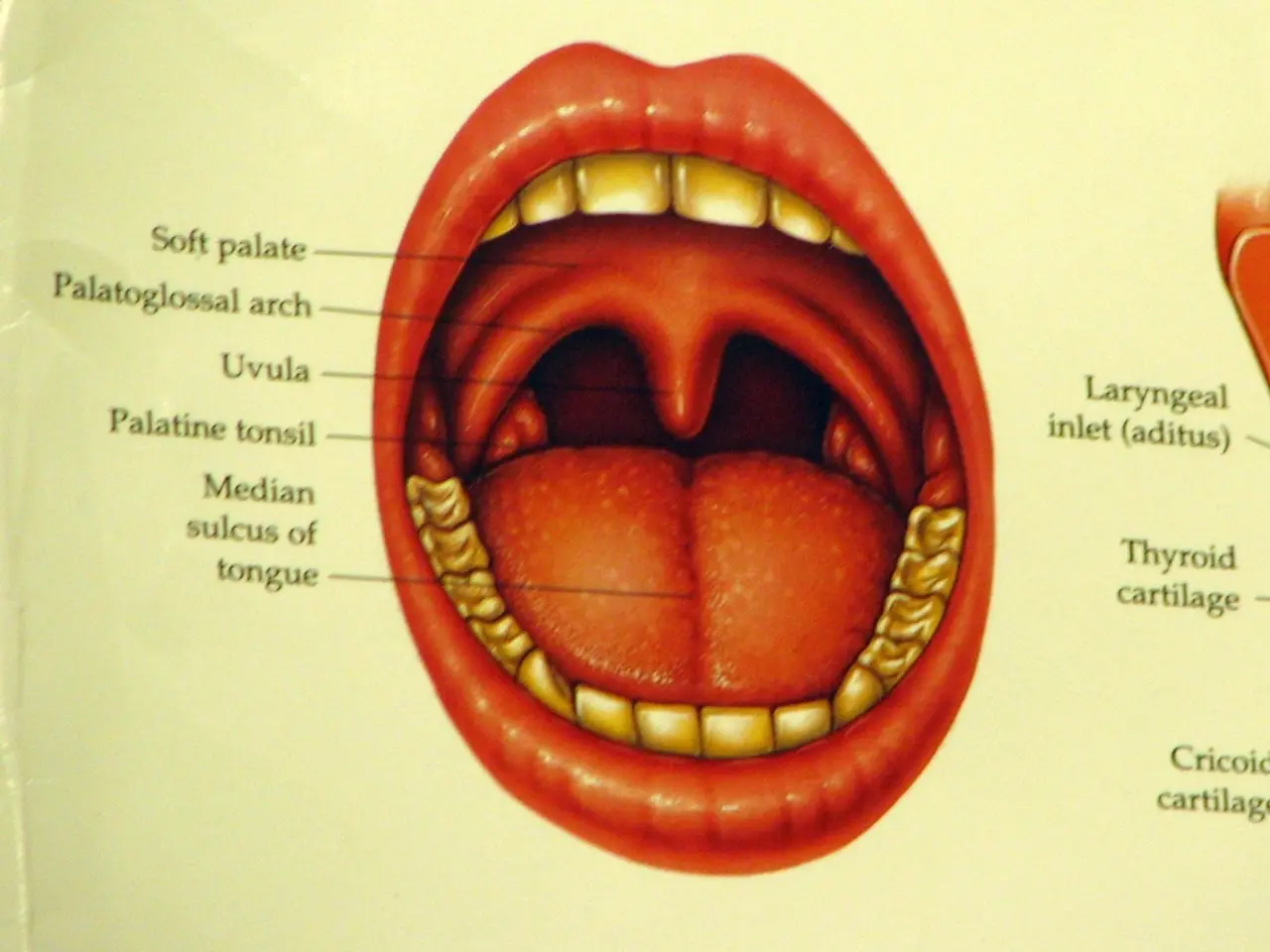The Reason for Forming Bruises: Exploring Causes and Recovery Mechanisms Related to Bruising
The formation of bruises in the human body is primarily due to trauma that causes rupture of small blood vessels, leading to blood leaking into surrounding tissues[2][4]. This blood leakage is what causes the characteristic discoloration of a bruise.
Several factors contribute to the formation and severity of bruises. Physical trauma, such as impact or pressure, damages capillaries and initiates bruising[2][4]. Other factors include platelet count and function, blood clotting factors, vitamin deficiencies, medications, age and skin condition, and underlying diseases[1][3].
Low platelet levels or impaired platelet function can reduce the ability to form clots and stop bleeding, increasing the risk of bruising. Deficiencies or disorders in clotting proteins can also cause easy bruising[1][5]. Lack of vitamins C, K, or B12 can weaken blood vessel walls, reduce collagen production, and impair clotting, making bruises more likely[1][3].
Certain medications, such as corticosteroids, blood thinners, and drugs affecting platelet function, can increase the risk of bruising[1][3]. Aging thins the skin and blood vessels, increasing the likelihood of bruising even from minor bumps[1][3]. Underlying diseases like liver disease, autoimmune disorders, and blood cancers can result in easy bruising[1].
The healing of bruises involves the reabsorption of leaked blood and cellular debris by the body and repair of damaged blood vessels. Bruises typically change color over time due to breakdown of hemoglobin in the leaked blood into pigments like biliverdin and bilirubin[4]. Adequate vitamin C supports collagen production and wound repair[3]. Platelets and clotting factors stop further bleeding and help form temporary barriers in damaged vessels for healing to proceed[1].
In addition to the body's natural healing process, there are ways to reduce the appearance and discomfort of bruises. Arnica gel or cream, aloe vera, vitamin C and K creams, and gentle massage and heat application may help[6].
By understanding the causes and healing processes of bruising, we gain insight into how the body responds to injuries and repairs itself. Proper nutrition, including vitamins C, K, iron, and zinc, supports healthy skin, blood vessels, and immune function, aiding in faster bruise recovery[3]. Supporting our body with good nutrition, safe practices, and proper care can minimize bruising and appreciate the healing power that lies within us.
References:
[1] Mayo Clinic. (2021). Bruises. https://www.mayoclinic.org/diseases-conditions/bruises/symptoms-causes/syc-20369103
[2] NHS.UK. (2021). Bruises. https://www.nhs.uk/conditions/bruises/
[3] Healthline. (2021). How to Heal a Bruise Faster. https://www.healthline.com/health/how-to-heal-a-bruise-faster
[4] WebMD. (2021). Bruises: Causes, Symptoms, and Treatments. https://www.webmd.com/first-aid/bruises
[5] MedlinePlus. (2021). Bruises. https://medlineplus.gov/ency/article/000021.htm
[6] Cleveland Clinic. (2021). Bruises: How to Treat Them. https://my.clevelandclinic.org/health/diseases/17652-bruises-how-to-treat-them
- Maintaining a balanced lifestyle that includes regular sports, proper nutrition, and skin care might contribute to minimizing bruising, as it supports overall health and immune function.
- In the realm of health-and-wellness, focusing on food rich in vitamins C, K, iron, and zinc could potentially accelerate the healing process of bruises.
- Fitness-and-exercise routines can improve blood circulation, potentially strengthening blood vessels and reducing the likelihood of easy bruising.
- As aging thins the skin and blood vessels, adopting a carefully developed skin-care regimen might help offset the increased risk of bruising.
- Research within the science of health demonstrates that adequate nutrition and proper care can play a significant role in recognizing and aiding our body's natural healing power, particularly in relation to the recovery from bruises.




